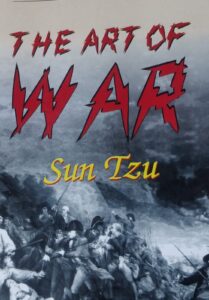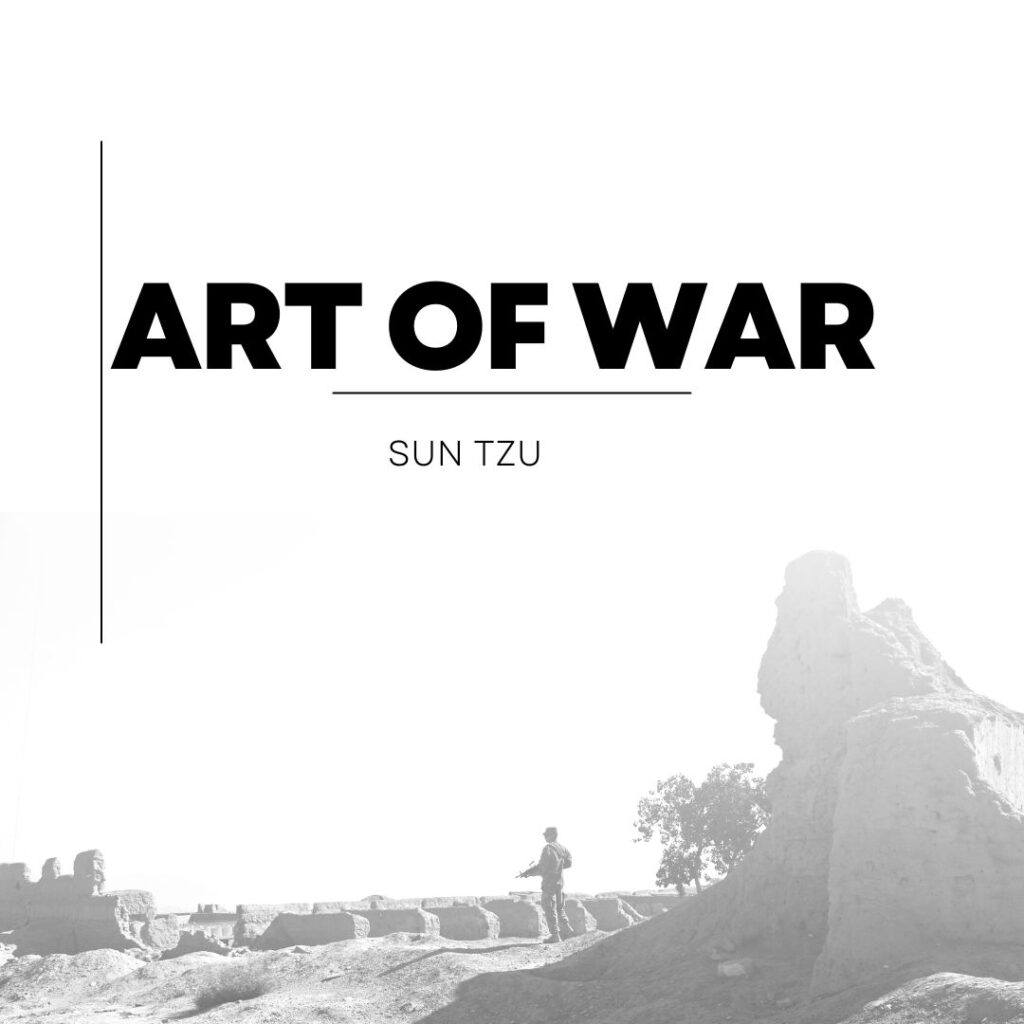The Art of War is an ancient book by one of the most famous Chinese strategists and military generals, Sun Tzu, regarded as one of the most influential works of writings on combat and war tactics; the book is massive wisdom. On top of that, numerous iterations of the original text made it famous across all world domains.
The book stands the test of time and delivers on every aspect of modern-day combat. The themes and ideas of the book can easily be implemented in any warfare. Sun Tzu, who never lost his battles, explains the crucial and psychological details of combat while explaining the fighting ways. Thus, it is an excellent book for leaders and individuals striving for leading roles.

The Art of War: A Timeless Strategic Relic
The Art of War consists of 13 chapters divided into small sections explaining different strategies and combat ideas. Moreover, it questions some fundamental questions about warfare and explains them clearly.
Even though books are short, they have many great ideas and techniques for war. On top of that, one can inveil the thoughts of the book into whole chapters. In this, we’ll review some of the highlighting ideas of Art of War.
Victory is the Goal in the Short Term
Sun Tzu does not support the war, but he’s not a pacifist; he believes it’s essential to finish a fight as soon as possible. Moreover, he believes that a good leader tries to win the war quickly without causing much harm to the city. Therefore, victory and short duration are essential in any warfare.

Know Yourself and Know Your Enemy
Before knowing your enemy, it’s essential to know yourself because by knowing yourself, you can understand the force against which you’re up. Furthermore, having a great sense of self is the only way to accumulate anything on your enemy.
Thus, knowing your assets and liabilities is essential because you can attack the crucial components of the enemy.
Defensive Security and Offensive Victory
When you are defensive, you can prevent losing the war, but you must be offensive to win. However, being nasty doesn’t mean you fight recklessly; it means that the best way to win is through offence. So make sure to have excellent offence because only you can hurt your enemy and defeat him. Lastly, being overly defensive will give time for your opponent to figure you out and can beat you as well.
Combinations are an Important Part of Strategy
There are only a few aspects of offence or defence, but they are numerous combinations that you can make. A leader’s combination in his strategy is a difference between victory and defeat. On top of that, mixtures can be easily changed, figured and designed according to the presented condition. Also, it is advisable to have different combinations for different days of battle, as repetition can cause more harm in the long run.

Making Allies in Different Terrains
A leader should be able to make allies in different terrains or regions. It’s essential to have good friendships of leaders with the area’s people. So to beat a strong enemy, other forces can join together and formulate new strategies based on insights about the enemy. Historically, it is evident that allies had great success against a common enemy.
Using Spies to Get Information
The Art of War is based on information; the more information about your enemy, the more chances of success.

One crucial way to get information is through the use of spies. However, there are different types of spies mentioned in the book. Generally, the culmination of knowledge from all spies will give you the best results.
The Art of War: Winning the Fights and Conquering the Battles
Sun Tzu’s The Art of War is an influential book on combat and war tactics. It consists of 13 chapters divided into small sections explaining different strategies and combat ideas.
It emphasises the importance of victory in the short term, knowing yourself and your enemy, and defensive security and offensive victory.
Combinations are essential to the strategy; making allies in different terrains and using spies to get information is crucial to success.
Frequently Ask Questions (FAQs)
How many chapters are present in The Art of War?
There are 13 chapters present in The Art of War.
- Laying Plans
- Waging War
- Attack by Stratagem
- Tactical Dispositions
- Energy
- Weak Points and Strong
- Manoeuvring
- Variation in Tactics
- The Army on the March
- Terrain
- The Nine Situations
- The Attack by Fire
- The Use of Spies
Did Sun Tzu ever lose?
No, Sun Tzu never lost a single battle or campaign during his career.
Does Art of War promote violence or war?
No, the book focuses on strategy for warfare but does not promote violence.
It is the opposite of warfare but provides the best insight to prepare for one.
Quotes By Sun Tzu
‘The art of war is vital to the state.
It is a matter of life and death, a road to safety or ruin.
Hence, it is a subject of inquiry that we cannot neglect today or tomorrow.’
-Sun Tzu


Great read!
🔥🔥🔥